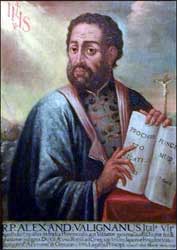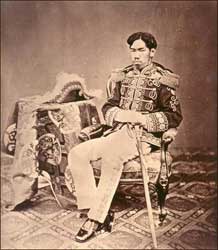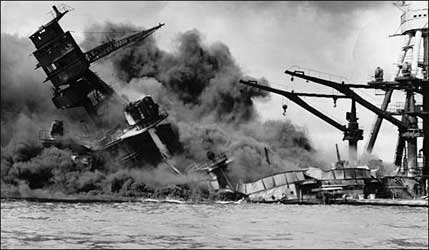True Christianity reached China and Japan 2000 years:
Behold, these
shall come from afar: and, lo, these from the north and from the west;
and these from the land of Sinim (Isaiah 49:12).
The land of Sinim
refers to China in the Holy Bible. China had millions of Christians,
which the Latin Church derisively referred to as Nestorians
or heretics. Marco Polo in his Travels refers to the
millions of Christians he found in China.
The vast multitude
of Chinese Christians were later exterminated by the Mongols and the
Muslims. The Japanese had their own version of the Spanish Armada when
the Mongols tried to invade Japan.
The first 3 Jesuits
to enter Japan were Francis Xavier, Alessandro Valignano and Francisco
Cabral.

Francis
Xavier (1506-1552).
|
| |
The
Jesuits first entered Japan around 1549 and were warmly
received by the Japanese Emperor.
The
Jesuits called themselves "Christians" and said
that they had come to preach "Christianity."
Isolated
on their island empire, the Japanese had no knowledge
of world history. |
|
|

Alessandro
Valignano
(1539-1606).
|
At
first the Jesuits were warmly welcomed by the Japanese emperor who was
eager for contact with the Western world. The Emperor, Daimyo Nobunaga,
welcomed them and actually gave them land in Kyoto:
Daimyo
Nobunaga, sixteenth century military dictator of Japan, welcomed the
Jesuit missionaries who came with the Western traders. Contrary to
popular belief, when Japan first came into contact with the West she
was eager for the interchange of ideas and commercial commodities.
Nobunaga granted the Roman Catholics freedom to propagate their religion,
donated them land in Kyoto and promised them a yearly allowance of
money. Soon missions were established throughout the country and converts
were made by the thousands." (Vietnam, Why Did We Go?,
p. 146).

Daimyo
Nobunaga (1534-1582).
|
| |
The
Japanese welcomed the Jesuits who told them that they
were "Christians" and had come to spread "Christianity."
The
Japanese soon found out that the "missionaries"
were just the first troops in a conquering army meant
to subjugate and annex them to the Spanish Empire. |
|
|

Statue
of Daimyo Nobunaga.
|
That
love soon turned to hate however when the astute Japanese found out
that the "missionaries" were just the vanguard of an invading
army:
In
1596 a Spanish galleon, the San Felipe, was shipwrecked off
the providence of Tosa. Hideyoshi ordered the ship and its goods confiscated.
The angry Spanish captain, wishing to impress or intimidate the Japanese
officials, indulged in some boasting how Spain had acquired a great
world empire. For proof the captain showed the Japanese officials
a map of all the great Spanish dominions. His astonished hearers asked
how it had been possible for a nation to subjugate so many lands.
The Spanish captain boasted that the Japanese would never be able
to imitate Spain, simply because they had no Catholic missionaries.
He confirmed that all Spanish dominions had been acquired by first
sending in missionaries to convert their people, then the Spanish
troops to coordinate the final conquest.
When this conversation was reported, Hideyoshi's anger knew no bounds.
His suspicions about the use of missionaries as a first stepping-stone
for conquest was confirmed. He recognized this pattern of cunning
conquest at work within his own empire.(Vietnam, Why Did We Go?,
pp. 151-152).
When
the Japanese emperor found out about this Jesuit "missionary"
spearhead to conquer his country, his fury knew no bounds.

Daimyo
Hideyoshi (1537-1598).
Emperor from 1582 to 1598.
|
| |
Daimyo
Hideyoshi began placing severe restrictions on the Jesuit
"missionaries."
His
successor, Tokugawa Ieyasu, banned all foreigners from
the country, and hermetically sealed Japan until the arrival
of Commodore Perry in 1854. |
|
|

Tokugawa
Ieyasu (1543-1616).
Emperor from 1623 to 1651).
|
The Jesuits—like
the false "Jews"—have been banned from almost every
single country in the world.
The
Exclusion Edict of 1639 banned the Jesuits from Japan!!
Those
who converted to Catholicism were questioned about their loyalty to
Japan, and in 1597, Hideyoshi ordered the crucifixion of nine Jesuit
missionaries and seventeen Japanese converts. This was only the start
of the hostility towards European influence and interaction; persecutions,
beheadings, and forced secessions would all but eliminate Roman Catholicism
over the next few decades.
The
3 key points of the Exclusion Edict of 1635 included:
1 |
The
Japanese were to be kept within Japan’s own boundaries. Strict
rules were set to prevent them from leaving the country, and if
any such attempt was made, they would face penalty of death. Europeans
that entered Japan illegally would face the death penalty as well.
|
2 |
Catholicism
was strictly forbidden. Those found practicing the Christian faith
were subject to investigation, and anyone associated with Catholicism
would be punished. To encourage the search for those who still followed
Christianity, rewards were given to those who were willing to turn
them in. Prevention of missionary activity was also stressed by
the edict; no missionary was allowed to enter, and if apprehended
by the government, he would face harsh sentences. |
| 3 |
Trade restrictions
and strict limitations on goods were set to limit the ports open
to trade, and the merchants who would be allowed to engage in trade.
Relations with the Portuguese were cut off entirely; Chinese merchants
and those of the Dutch East India Company were restricted to enclaves
in Nagasaki. Trade was also conducted with China through the semi-independent
vassal kingdom of the Ryukyus, with Korea via Tsushima Domain, and
with the Ainu people through Matsumae Domain. |
Naval guns forced
the reclusive Japanese to open up to the outside world in 1853.
Commodore
Matthew Perry forced Japan to open up in 1853
In
1852, Perry embarked from Norfolk, Virginia, bound for Japan, in command
of a squadron of 4 ships: Mississippi, Plymouth, Saratoga,
and Susquehanna. He landed on July 18, 1853, and was met by
representatives of the Tokugawa Shogunate who told him to proceed to
Nagasaki, where there was limited trade with the Netherlands and which
was the only Japanese port open to foreigners at that time.

Commodore
Matthew Perry, USN
(1794-1858).
|
| |
Commodore
Matthew Perry forced Japan to open up to the outside
world in 1853.
His
wife, Jane Slidell, was sister of the infamous rebel John
Slidell, who was involved in the Trent Affair which
almost started a war with Great Britain. |
|
|

Commodore
Perry's "black ships" forced J
apan to open up to outsiders.
|
On
March 31, 1854, a treaty was signed between the U.S. and Japan entitled
The Convention of Kanagawa. Here are some of the articles in that treaty:
ARTICLE
1. |
| There
shall be a perfect, permanent, and universal peace, and a sincere
and cordial amity between the United States of America on the one
part, and the Empire of Japan on the other part, and between their
people respectively, without exception of persons or places. |
ARTICLE
II. |
The port of
Simoda [in Yedo harbor], in the principality of Idzu, and the port
of Hakodade, in the principality of Matsmai [Hokkaido], are granted
by the Japanese as ports for the reception of American ships, where
they can be supplied with wood, water, provisions, and coal, and
other articles their necessities may require, as far as the Japanese
have them. The time for opening the first-named port is immediately
on signing this treaty; the last named port is to be opened immediately
after the same day in the ensuing Japanese year.
NOTE. A tariff of prices shall be given by the Japanese officers
of the things which they can furnish, payment for which shall be
made in gold and silver coin. |
ARTICLE
III |
| Whenever ships
of the United States are thrown or wrecked on the coast of Japan,
the Japanese vessels will assist them, and carry their crews to
Simoda, or Hakodade, and hand them over to their countrymen, appointed
to receive them; whatever articles the shipwrecked men may have
preserved shall likewise be restored, and the expenses incurred
in the rescue and support of Americans and Japanese who may thus
be thrown upon the shores of either nation are not to be refunded.
|
Japan became stragegically
important after the loss of the Papal States in 1870.
Japan
became strategically important after the loss the Papal States in 1870
After
the loss of the Papal States in 1870, Japan became strategically important
to the Vatican because of its proximity to Russia.

Emperor
Meiji (1852-1912).
|
| |
After
1870, Japan began a major armaments program with their
navy patterned after the Royal Navy.
They
also studied the Prussian military system being impressed
with their lighting victory over the French in 1870.
In
1894, they began the conquest of Korea and sought to end
Chinese influence in that country. |
|
|

Emperor Meiji
(1852-1912).
|
Russia
was one of the first countries to recognize the newly united kingdom
of Italy with Rome as its headquarters. Russia was also the most powerful
country in Europe and its conquest was the key to regaining the lost
states.
The
Russo-Japanese war of 1905
The
Russians were in constant pursuit of a warm water port on the Pacific
Ocean, for their navy as well as for maritime trade. The recently established
Pacific seaport of Vladivostok was the only active Russian port that
was reasonably operational during the summer season; but Port Arthur
would be operational all year. Negotiations between the Tsar's government
and Japan between the end of the First Sino-Japanese War and 1903, had
proved futile. The Japanese chose war to maintain exclusive dominance
in Korea.

Painting
of Admiral Togo on the bridge of the Japanese battleship Mikasa,
before the Battle of Tsushima in 1905.
|
| |
The
Russo-Japanese war was a disaster for Russia and almost
led to the overthrow of Tsar Nicholas II. |
|
|

Retreat
of Russian soldiers after the
Battle of Mukden.
|
This
disastrous war with the Japanese Empire was orchestrated from London
in order to destroy the Orthodox Church and replace it with British
Marxism-Leninism.
The
Tripartite Pact
In
September 1940, Nazi Germany, Italy and Japan entered into a military
alliance called the Tripartite Pact, which officially founded the Axis
Powers of World War II that opposed the Allied Powers.

Emperor
Hirohito (1901-1989).
Reigned from 1926 to 1989.
|
| |
World
War I and World War II could have been easily avoided if
the British were expelled from Canada after the Civil War!! |
|
|

Tripartite
Pact signing. Seated on the left starting with Saburo Kurusu,
Galeazzo Ciano and Adolf Hitler.
|
Karl Marx—the
father of Communism—was a British newspaper reporter for the New
York Herald Tribune during the U.S. Civil War. "Journalist,"
along with "actor," was always a favorite cover for British
spies.
The
bombing of Pearl Harbor
As
signatory to the Tripartite Pact, Japan was supposed to attack the Soviet
Union in the East, while Germany attacked in the West. This did not
happen however because Japan had a nasty encounter with the Russian
forces in 1939 at the Battle of Khalkhyn Gol.
In
May 1939, the Japanese Kwantung army was attacked and almost annihilated
by Russian general Georgy Zhukov. It was the real beginning of WWII.
This
encounter with the Russian army made the Japanese think twice about
attacking Russia so they attacked Southeast Asia instead.

Franklin
Delano Roosevelt (President from 1933 to 1945), tried to pack
the Supreme Court.
|
| |
WWII
came just at the right time for Roosevelt, as it allowed
him to remain President for an unprecedented 12 years,
and appoint 8 Supreme Court judges. |
|
|

Japanese
attack on Pearl Harbor on Dec. 7, 1941.
|
It
never occurred to Roosevelt that the British in Canada were the major
threat to the United States . . . and not the far away Japanese Empire.
Instead
of attacking Russia as planned and agreed in the Tripartite Pact, the
Japanese launched an attack on Southeast Asia. On December 7, 1941,
they launched a "surprise" attack on Pearl Harbor which wasn't
a surprise at all because the Japanese cipher was already broken.
The
atomic bombing of Hiroshima!!
On
August 6, 1945, a B-29 bomber dropped an atomic bomb on Hiroshima, Japan.
Over 150,000 people were killed. Everything within a one-mile radius
was completely destroyed. That is almost everything.
Less
than one kilometer from ground zero was a two story home attached to
a church. The home remained intact. The church remained except for the
roof which was blown away. Inside the home were eight Jesuit priests.
Except for a few minor cuts and bruises these eight priests were not
harmed.
How these eight
men lived through an atomic blast has never been explained. How the
home remained is also a mystery. Some of the world's greatest scientists
have investigated, and none have even attempted a theory on this remarkable
survival. They have however, provided the world with documentation proving
beyond any reasonable doubt that these buildings should have been destroyed
and the priests, not just killed, but annihilated.

Total
devastation after the atomic bombing of Japan.
|
| |
Pedro
Arrupe was living at Nagatsuka about 2 miles (3 km) from
ground zero.
He
survived the bombing and led one of the first rescue teams
to arrive in the city.
As
general, he was responsible for the shooting of Pope
John Paul II in St. Peter's Square. |
|
|

Pedro
Arrupe (1907-1991).
Black Pope from 1965 to 1983.
|
At
8:151/2 that August morning, every window in Arrupe's resident at
Nagatsuka was shattered by a roaring shockwave, and the sky was filled
with a light he later described as 'overwhelming and baleful.' By
the time he and his community of Jesuits ventured out some thirty
minutes later, a firestorm driven by a scorching 40 mph wind had enveloped
Hiroshima. As he dispatched his first rescue team into the suburbs—his
was the first medical team, rudimentary though it was, to start up
in the stricken city—a muddy, sticky, radioactive rain began
to fall, turning the heat of the air into an eerie chill (Martin,
The Jesuits, p. 350).
The
Japanese were more than anxious to surrender once the Soviets entered
the war. Most of the top U.S. generals (including President Eisenhower)
said that the bombing was unnecessary. It had great propaganda effect
for the Jesuits as Baptist President Truman was blamed for the bombing.
Arrupe
blamed the "godless" United States (meaning not Pope ruled)
for the bombing:
From
that moment, Hiroshima became something new to Pedro Arrupe. It became
a bloody example of what a "godless" society could wreak;
it became a living tableau, etched in pain and suffering, of what
Western corruption could accomplish; it became a pathetic commentary
on Western misunderstanding of the Japanese mind that was so utterly
alien to it.(Martin, The Jesuits, p. 350).
Arrupe
and his Jesuits actually became HEROES and CELEBRITIES in Japan:
In
a curious twist of fate, his service in the city where he had been
sent to find greater obscurity brought him his first taste of worldly
limelight. He and his Religious Order received public thanks from
the Japanese. Without any doubt, their efforts at aiding the stricken
were instrumental in the postwar success of the Jesuits in Japan.
During the twenty years Pedro Arrupe spent in Japan after 1945—during
his career as Vice-Provincial of all Jesuits in postwar Japan—he
remained a celebrity of sorts. And he still kept up the same back-breaking
pace of work—administering the Province, fund-raising, preaching,
traveling. (Martin, The Jesuits, p. 352).
President Truman
was SET-UP!!
Just
as in the case of the gracious Queen Elizabeth I who was forced into
signing the death warrant of Mary Queen of Scots, President Truman
was set-up by the events surrounding the atomic bombing of Japan.
President Truman was actually OUT of the country SIGHTSEEING when
those momentous events happened.
 President
Harry Truman (1883-1972).
President
Harry Truman (1883-1972).
President from April 12, '45 to Jan. 20, '53. |
| |
President
Truman was FRAMED in the events surrounding the dropping
of the bombs.
He
was sent out of the country at the most critical moment
in the history of the nation.
Admiral
Leahy—top U.S. military leader— said that
the use of the bomb was barbaric and compared it to the
use of poison gas in WWI. |
|
|
 President
Truman was touring Berlin with Byrnes and Leahy in July 1945.
Truman is on the left in the back seat next to Byrnes and Leahy.
President
Truman was touring Berlin with Byrnes and Leahy in July 1945.
Truman is on the left in the back seat next to Byrnes and Leahy.
|
The
great victory over Jesuit Fascism and Nazism was spoiled by the dropping
of the atomic bomb on civilians. Likewise, the great Union victory
of the Civil War was ruined by the subsequent military inquisition
trial and hanging of Mary Surratt.
How
easily this nightmare could have been avoided if President Lincoln
had lived and drove the British out of Canada!!
Vital
Links
The
Horrors of Hiroshima
The
Jesuits in Japan by Avro Manhattan
Chairman
of Joint Chiefs said bombing was "barbaric."
References
Fülöp-Miller,
René. The Power and Secrets of the Jesuits. George Braziller,
Inc., New York, 1956.
Manhattan,
Avro. Vietnam, Why Did We Go? Chick Pub., Chino, CA, 1984.
Martin,
Malachi. The Jesuits.The Society of Jesus and The Betrayal of the
Roman Catholic Church. Simon & Schuster, New York, 1987.
Copyright
© 2013 by Patrick
Scrivener
Back
to Main Menu |



















